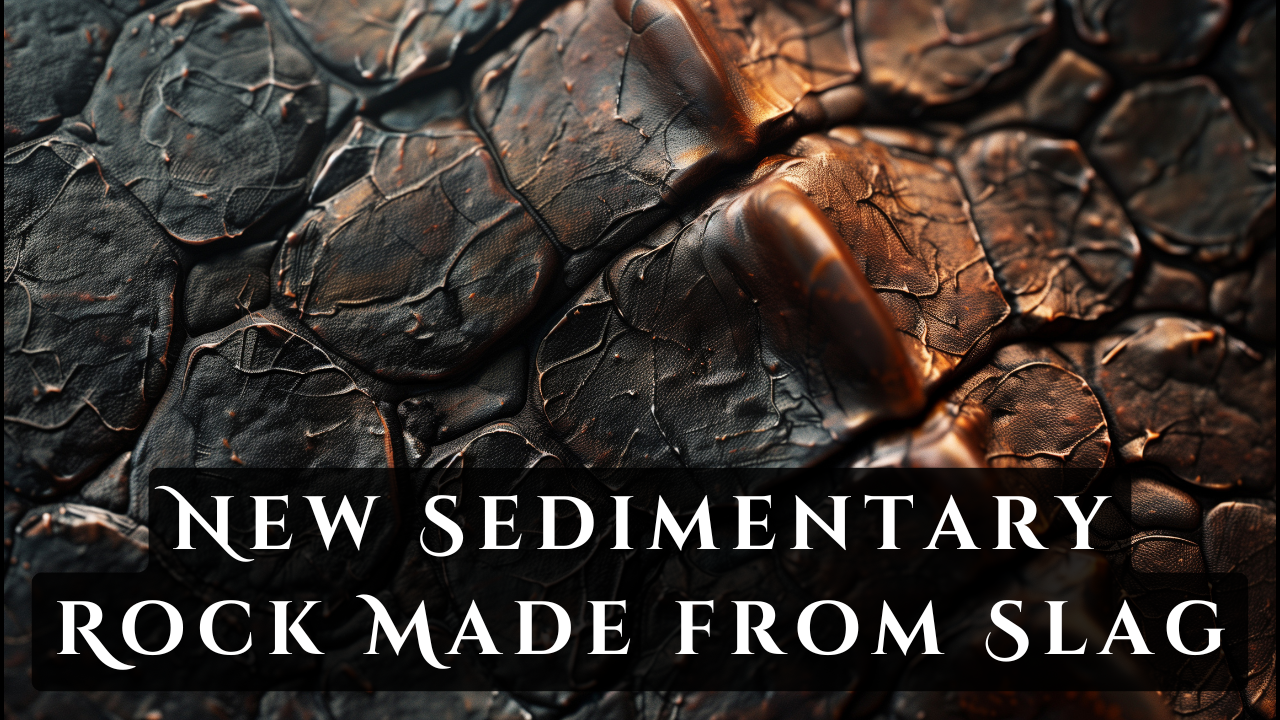Font size:
Print
Slag Made from New Sedimentary Rock
Context:
Researchers documented a new type of sedimentary rock formed from coastal slag deposits in the U.K., showcasing how human waste can lead to unusual geological formations.
More on News:
- The Anthropocene era signifies significant human impact on the Earth’s landscape, with industrial waste and construction debris drastically altering the environment.
- This includes changes in soil and water acidity, mineral distribution, and the very composition of sediments.
- In 2015, artificial ground contributed over 316 million tonnes of sedimentary material to oceans, far exceeding natural supplies.
Slag Overview:
- A by-product of steelmaking is a composite material composed of metal oxides and silicon dioxide. It plays a significant role in the creation of artificial ground.
- In areas like Warton, England, researchers are investigating the process of slag hardening, or lithification, which transforms industrial waste into sedimentary rock.
- Over time, as these rocks weather, they release sediments into the environment, often containing toxic metals that can contaminate soil, water, and air.
- Despite these concerns, slag also presents opportunities. It is chemically stable and has the unique ability to neutralise acidity, storing greenhouse gases like carbon dioxide through mineral carbonation.
- This process mimics natural weathering and could be crucial in rising slag production, which is projected to increase by 10.5% worldwide by 2031.
Methodology
|
Key Findings:
- The researchers identified various minerals, including a form of calcium silicate called larnite, and the presence of calcite, a form of calcium carbonate that aids in the lithification process.
- Stable isotope analysis revealed variations in carbon and oxygen isotopes, shedding light on the origins and dynamics of carbonate reactions in the environment.
- Two lithification mechanisms:
- Calcite cement precipitation: Dominated on the top surface and the sea-facing side above average water levels.
- This process occurs when minerals dissolve, releasing calcium that reacts with atmospheric carbon dioxide to form calcite.
- Calcium-silicate-hydrate (CSH) cement precipitation: The presence of saltwater prevented the dissolution of slag minerals, leading to the formation of CSH minerals with varying textures and elemental distributions.
Implications:
- Carbon Capture: Understanding these lithification processes can inform strategies for repurposing slag deposits for carbon capture.
- The calcite cement mechanism, in particular, can sequester atmospheric carbon dioxide without the need for transporting carbon to additional processing facilities.
- The precipitation of CSH minerals may help limit the release of potentially toxic metals like vanadium and chromium into the environment.
- Environmental Protection: The research also opens avenues for recovering valuable resources from slag deposits, increasing recycled materials in steelmaking.
- Additionally, the hardened slag could serve as a natural barrier against coastal erosion, marrying environmental protection with effective waste management strategies.
Subscribe to our Youtube Channel for more Valuable Content – TheStudyias
Download the App to Subscribe to our Courses – Thestudyias
The Source’s Authority and Ownership of the Article is Claimed By THE STUDY IAS BY MANIKANT SINGH






